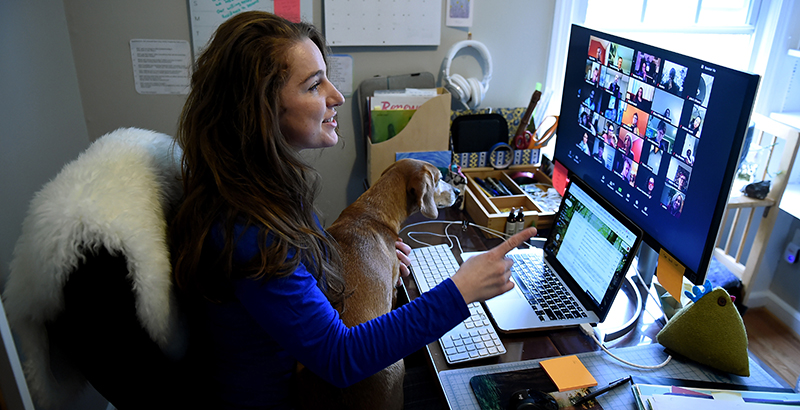An Educator’s View: We Have a Choice — Set a Bar of Mediocrity for Online Education or Take This Opportunity to Change How We Teach

In the ongoing debate about whether to open schools in the midst of a pandemic, the assumption that remote education is a poor substitute for in-person schooling has become established fact. From connectivity issues to a lack of social interaction, virtual learning has myriad challenges and shortcomings, and can never truly re-create the magic of the classroom.
But, as it becomes clear that remote and hybrid learning will continue for the foreseeable future, educators are presented with a choice: We can either set a bar of mediocrity because remote learning is new and difficult, or we can seize this once-in-a-lifetime opportunity to change the way we deliver high-quality education.
Ultimately, that’s not really a choice. Remote instruction is being delivered to millions of children today, so it’s our responsibility as educators to make online learning engaging, effective and accessible as possible for all students.
There are advantages to online learning that teachers can and should capitalize on that keep students logging on each day. In fact, a number of features unique to remote learning sync up quite well with the most recent cognitive science research on how our brains work and how children learn. Teachers can watch students work on a shared document in real time, providing immediate feedback on their written responses. Students can watch a teacher’s recorded lecture at their own pace, pausing and replaying as needed. Videoconferencing software lets teachers minimize verbal interruptions or disruptive behaviors from students during live classes. And students can ask questions risk-free through private chats or comments on shared documents.
To see how remote instruction squares with best practices in cognitively guided instruction, it’s helpful to break down the learning process into five essential component parts:
1. Psychological safety and productive struggle: Students must have the opportunity to take learning risks in a safe and supportive space;
2. Attention and engagement: It may seem simple, but students’ minds must be fully engaged in order for them to learn effectively and master new material.
3. Connections – One of the fundamental ways students learn is by making meaningful connections between new information and what they already know and understand.
4. Feedback – After lessons, students need to test out what they’ve learned with real-time feedback to see if it was the correct interpretation of the new material.
5. Metacognition – Listening to a teacher explain a lesson and provide feedback is not enough to ensure that a student has correctly interpreted and internalized the material. After lessons, students need additional opportunities to apply their new knowledge and skill to similar situations.
At each stage of the process, remote learning, when done thoughtfully and thoroughly, can help students overcome challenges and become better readers, writers and learners — sometimes in ways that traditional schooling still struggles to achieve. Consider the following scenarios:
- A sixth-grader afraid of speaking out in class can now reach out to a teacher directly during instruction using the chat feature found in most videoconferencing platforms.
- A high school junior who struggles to keep up with lectures in class can now view the lesson on his own time, pausing the content when his mind wanders or re-watching certain segments.
- A second-grader can complete a guided webinar independently if teachers weave into the lesson links that reference material taught on previous days or similar topics covered in movies, songs or TV shows. For example, themes of self-reliance and independence might be easier to see in The Little Mermaid, to reinforce the same nuanced ideas in Gary Paulsen’s novel Hatchet.
- A high school freshman can receive real-time responses on a literature assignment from a teacher who can provide guidance and feedback as it’s being composed.
- A kindergartner is able to read a book, via video, with a teacher who can easily record the session and review the video after to see what the child took in and failed to grasp. The teacher can then improve instruction for that student for the next lesson.
In each of these scenarios, remote instruction can actually help students learn in a way that’s often unavailable in the traditional classroom experience. The individual nature of communication between teacher and student is often better achieved through technology than in a busy classroom with dozens of competing needs for attention and guidance. And, when learning remotely, students can go at whatever pace works best for them.
Don’t get me wrong – I can’t wait to be back in school and see our students’ faces. Remote learning is no substitute for the power of human connection and the benefits it confers on students and teachers.
But it’s the best we’ve got for now, so we have to make the most of it. If we do it right, we might just develop some skills and methods that improve our craft as teachers and help students learn better when we get back to the classroom.
Jim Manly is superintendent of @KIPPNYC, a network of 15 public charter schools in New York City.
Get stories like these delivered straight to your inbox. Sign up for The 74 Newsletter

;)
